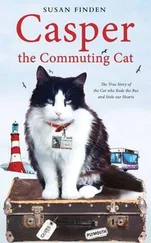Everywhere Sword went, Nokia , an eighty-three-foot maxi-yacht, the biggest boat in the race, appeared to follow. Kulmar thought it was deliberately shadowing him, hoping to get a better start by following his example. Kulmar may or may not have been flattering himself, but one thing was suddenly very clear: with less than a minute left before the start, Nokia was on a collision course with the Sword. Both yachts were on starboard tacks. Nokia was the windward yacht—but it wasn’t altering its course. “Go up! Go up!” Dags shouted at the big boat, trying to cause it to turn toward the wind. But Nokia did nothing to change direction. Its crewmen were also screaming, although no one on the Sword could understand what they were saying. By the time Nokia finally turned toward the wind, just a few yards away from the Sword , it was too late. Nokia ’s sails, no longer filled with wind, began luffing, and the yacht drifted sideways toward the Sword. With twenty-five seconds left before the start, Nokia ’s bow slammed into the Sword with a sickening crunch. The initial impact was on the Sword ’s starboard side, near the back of the yacht. Then, since Nokia had more forward momentum than the Sword , the bigger boat scraped its way up the side of the Sword , doing so with the screeching sound of a train applying its brakes.
Exploding with anger, Kooky tried to push Nokia away from his boat, but by then Nokia had turned downwind again. Its sails had refilled, driving the yacht against the Sword.
“Take down your sail!” Nigel Russell, a Sword crewman, screamed at Nokia. Seeing no response, he reached into his pocket and brandished a knife. “Take your sails down—or I’ll fucking cut them down!”
When the two boats finally separated, Kooky raised a red protest flag and Dags rushed to assess the damage. Two years earlier he had been on a boat that abandoned the Hobart after it had been damaged near the starting line, and he was appalled by the idea that the same thing could happen again. First he leaned over the starboard side to see if the hull had been pierced. It hadn’t, at least above the waterline, but he saw gouges and residue from Nokia ’s blue paint along a fifteen-foot-long section of the Sword ’s hull, near where it met the deck. The most obvious damage was to two stanchions, the metal posts mounted around the perimeter of the deck to support the lifeline that was supposed to prevent crewmen from falling off the boat. Both stanchions had been bent toward the center of the yacht, and the base of the aftmost one had punched through the deck, creating a three-inch-wide hole.
Going below, Dags examined the inside of the hull. The damage to the deck near the two stanchions was obvious—he could see daylight through the hole—but it didn’t look like a major structural problem. Nevertheless, it had to be fixed. Though the stanchions had no impact on the structural integrity of the yacht or the way it sailed, the lifeline they held was a crucial safeguard for the crew. Also, since the base of the stanchions and a nearby fixture were sometimes used to secure equipment and safety harnesses, the strength of the deck they were attached to was important.
While the rest of the crew focused on racing, Dags removed the screws that held the stanchions to the deck and stood on them, attempting to bend them back into shape with his weight. He reattached the stanchion that had caused the hole in the deck a few inches forward from where it had stood, trying to avoid the most damaged section of the deck. He also placed a small piece of plywood under the deck as backing. By driving the screws through both the deck and the wood, he hoped the stanchion would be as secure as it was before the crash. After nearly four hours of work, he was satisfied with the repair but annoyed that the work had made it impossible for him to sit on the rail, where his weight would have helped the boat reach its optimum speed.
For his part, Kooky was sitting in front of his onboard computer, tapping out an e-mail to race officials that described the damage and blaming it on Nokia , which suffered only superficial wounds. Hoping that the officials would impose a penalty on Nokia , Kooky wrote: “The damage to the starboard stanchions has been repaired. However, delamination occurred in a meterlong section of the starboard stern quarter.”
After he finished with the stanchions, Dags inspected the mast for damage. During the collision, the Sword ’s rigging had come into contact with Nokia ’s, potentially creating a weakness that could bring down the mast. On the port side, about six feet up from the deck, he spotted what looked like a small bulge. “Jeez, look at this,” he said to Andrew Parkes. Although the raised area was only two or three inches in diameter, it could mean the mast was damaged. A weakened mast is a disaster waiting—probably not for very long—to happen. Bearing the load of full sails in heavy winds puts the mast under tremendous stress. Even seemingly flawless masts crumble in the Hobart. Shinnying up the mast, Dags ran his fingers over the bump, but he couldn’t determine anything about its cause. “Let’s keep an eye on it,” he said. “There’s not much else we can do.”
The collision had already imposed a heavy cost. The Sword didn’t cross the starting line until about a minute after the gun. Instead of being one of the first boats to pass through the harbor, it was forced to weave its way through much slower yachts. After months of rigorous preparation, the Sword ’s crew was playing catch-up.
KENN BATT AND Brett Gage arrived back at the Bureau of Meteorology’s offices in time to watch the start of the race on television. A few minutes later, they examined the very latest output from the Australia-based forecasting computer model, which had just arrived. For the first time, it predicted the worst possible scenario, the one that the American model had been projecting all along. The forecasters deemed the consensus between the two models significant. If they turned out to be accurate, the center of low pressure would have substantially more intensity than what had been anticipated in the bureau’s official race forecast. The more Batt looked at the data, the more certain he became that the ingredients for a dangerous, cyclone-like force—one that would be far more powerful than most yachtsmen had ever seen before—were coming together.
A cold front was moving east toward Bass Strait while warm air was flowing from the north. Both masses of air were being drawn by a region of low pressure that was also traveling east—and that appeared likely to move to a position over eastern Bass Strait just as most of the Sydney to Hobart fleet arrived there. That heavy cold air would act like a flying wedge, lifting the moist warm air upward to produce precipitation and electrical storms. And if Batt needed further evidence that the cold front was substantial, he got it in the form of a bulletin about a snowstorm in southern Australia. It wasn’t unusual for snow to fall there in the winter, but this was December, which in the Southern Hemisphere meant it was the middle of the summer. Kenn Batt and Brett Gage began to get a very bad feeling.
The Hobart has three segments. In the first, boats sail down the southernmost section of Australia’s eastern coast, where they are somewhat sheltered by land. During the final third, they travel along the east coast of Tasmania, where the island offers a degree of protection. In the middle segment—during which they cross Bass Strait—yachts are much more vulnerable. There is no land to block the wind or waves from the east or west. Indeed, the wind tends to funnel through the strait, and the shallower water there causes the waves to heighten.
Читать дальше












